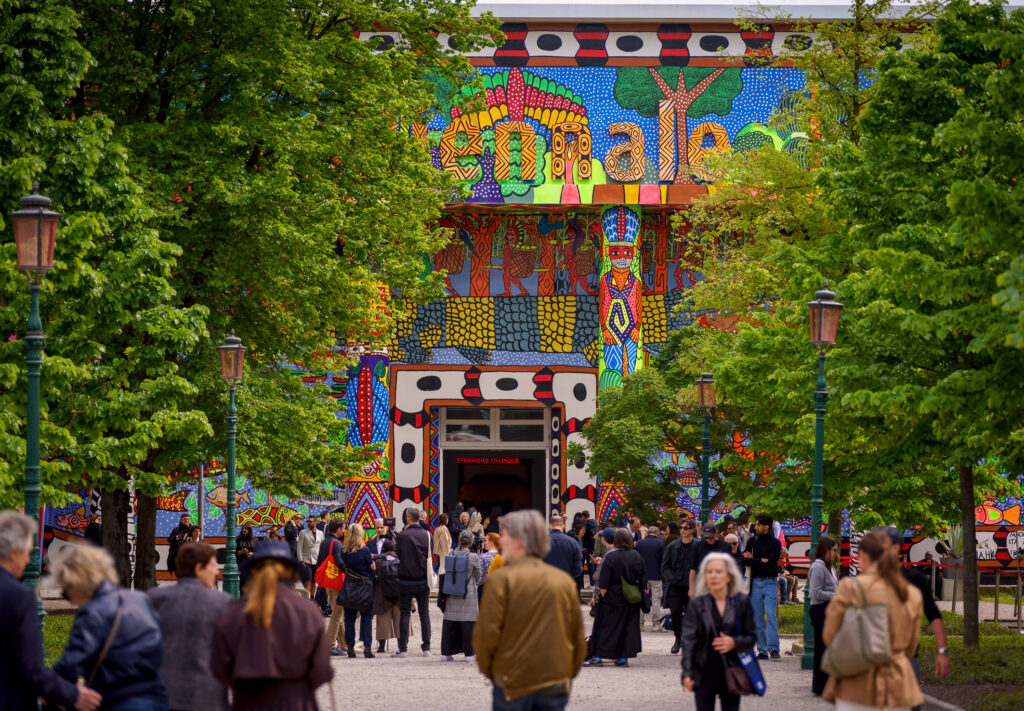The 60th Venice International Art Exhibition, boldly titled “Strangers Everywhere – Foreigners Everywhere,” opened its doors on April 20 and will continue to captivate audiences until November 24, 2024. Curated by Adriano Pedrosa and hosted between the Giardini and the Arsenale, this edition furthers the Biennale’s commitment to environmental sustainability, aiming to replicate the carbon neutrality success achieved in 2023.
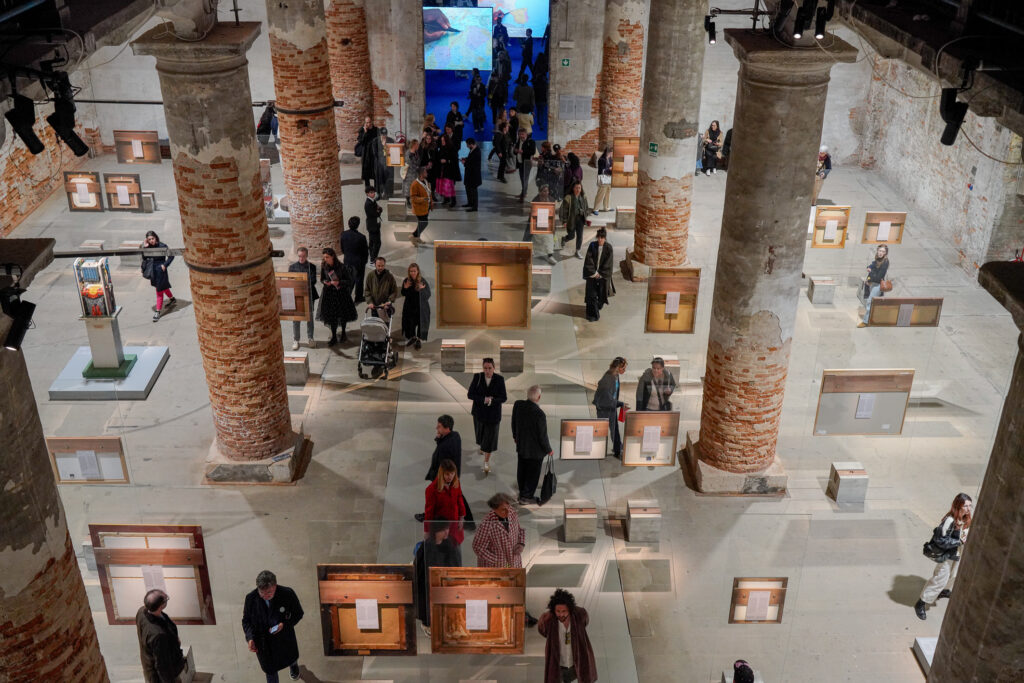
Global Reflections
The exhibition draws inspiration from the work of artist Claire Fontaine, addressing deep themes like immigration and cultural diversity and exploring the complexities of living in a world scattered with wars and humanitarian crises. Featuring 331 artists from 80 different nations, including Hong Kong, Palestine, and Puerto Rico, “Strangers Everywhere” becomes a crossroads of global voices reflecting on identity, displacement, and belonging.
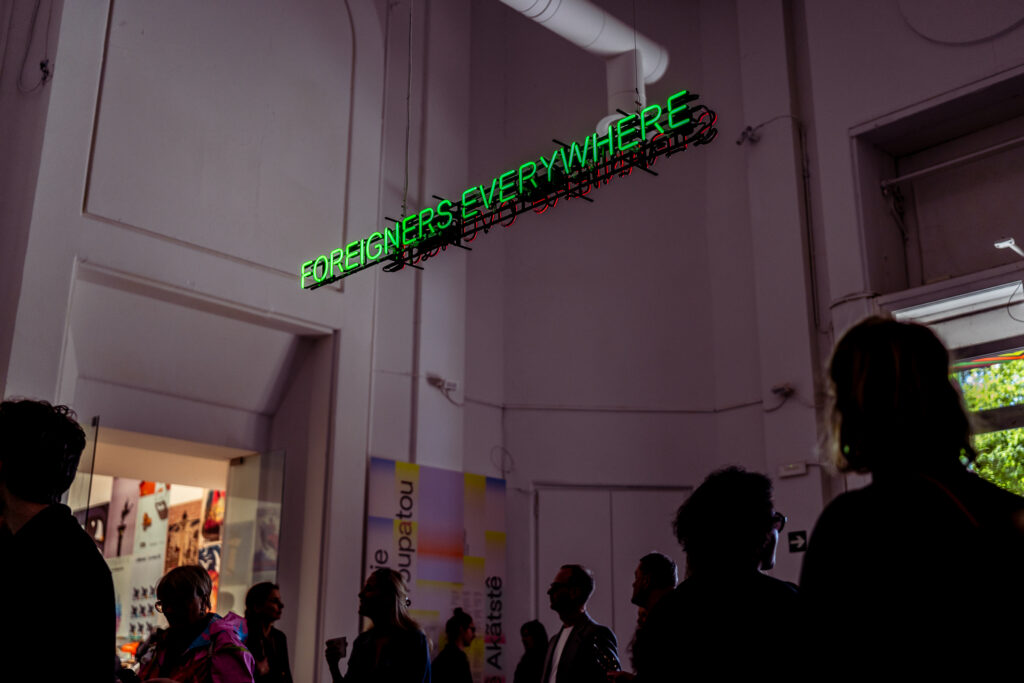
Pedrosa fosters an artistic dialogue that crosses conventional boundaries, highlighting marginalized figures such as queer, indigenous, and self-taught artists, placing them at the forefront. The show also emphasizes the importance of tradition and blood ties among artists, with a strong focus on textiles as an expressive medium. Additionally, the Historical Core delves into the modernisms of the Global South and offers critical reflections on the boundaries and definitions of these artistic practices in a Western-dominated art scene.
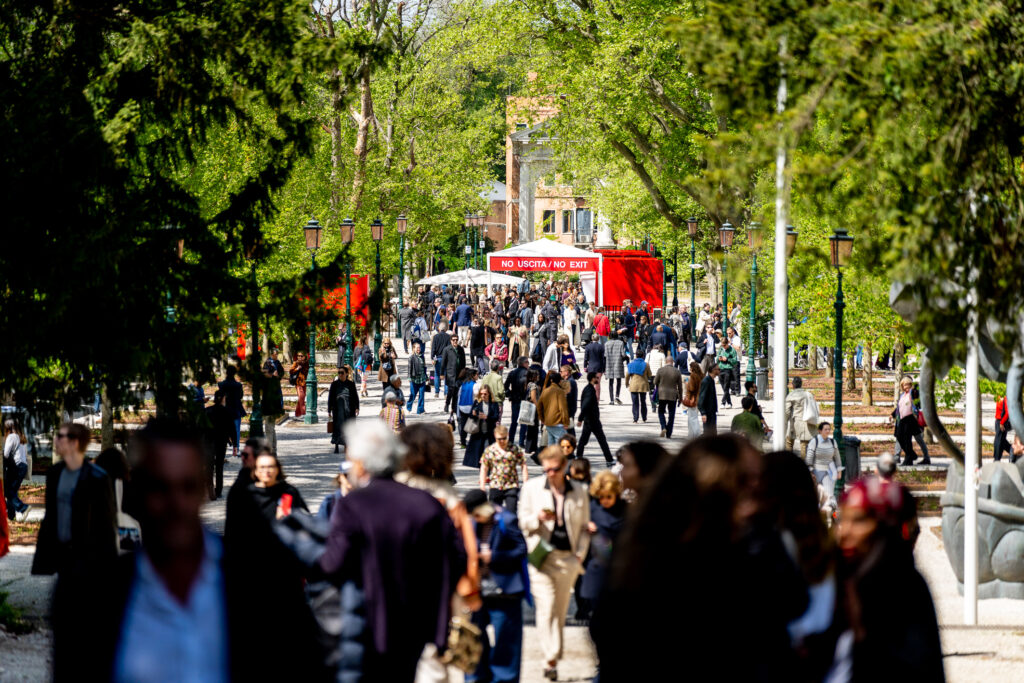
National Participations: Benin, Ethiopia, Timor Leste, and Tanzania debut
The 2024 Biennale features 87 national contributions, welcoming new participants from Benin, Ethiopia, Timor Leste, and Tanzania, enhancing intercultural dialogue. A highlight is the Italian Pavilion, curated by Luca Cerizza. It showcases Massimo Bartolini’s compelling work, which masterfully blends sounds and words into a collective narrative, making it an essential visit.
Described by President Pietrangelo Buttafuoco as a display of current and possible scenarios, this edition presents itself as a prism through which to view contemporary and past dynamics, stimulating an ongoing dialogue between viewers and the exhibited works.
Venice again proves to be a cultural and artistic reflection epicentre, bridging various realities and global perspectives. The 2024 Biennale is this: an invitation to rethink our way of seeing the world and “others,” at a historical moment when understanding and accepting otherness are more crucial than ever.
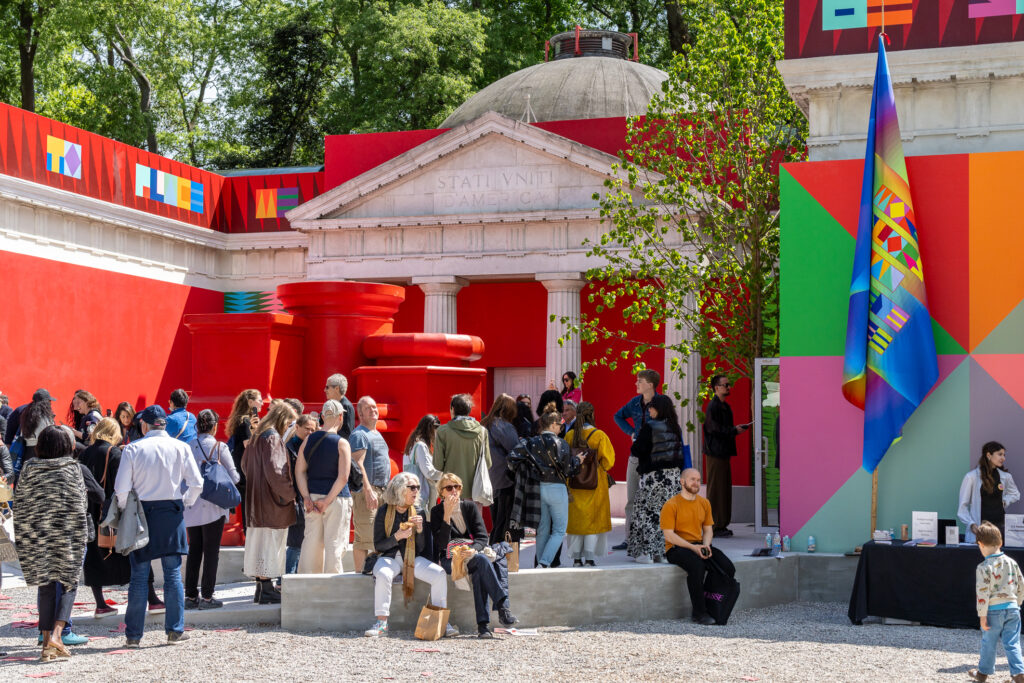
The 5 Pavilions Not to Miss at the Venice Biennale 2024
Australia, kith and kin
Winner of the Golden Lion for Best National Participation, the Australian Pavilion presents “kith and kin,” an emotionally powerful installation by Archie Moore. Inside, a memorial stretches up to the ceiling, resembling a celestial map, tracing the artist’s genealogy and his ties with the First Nations, covering over 65,000 years of history and 2,400 generations.
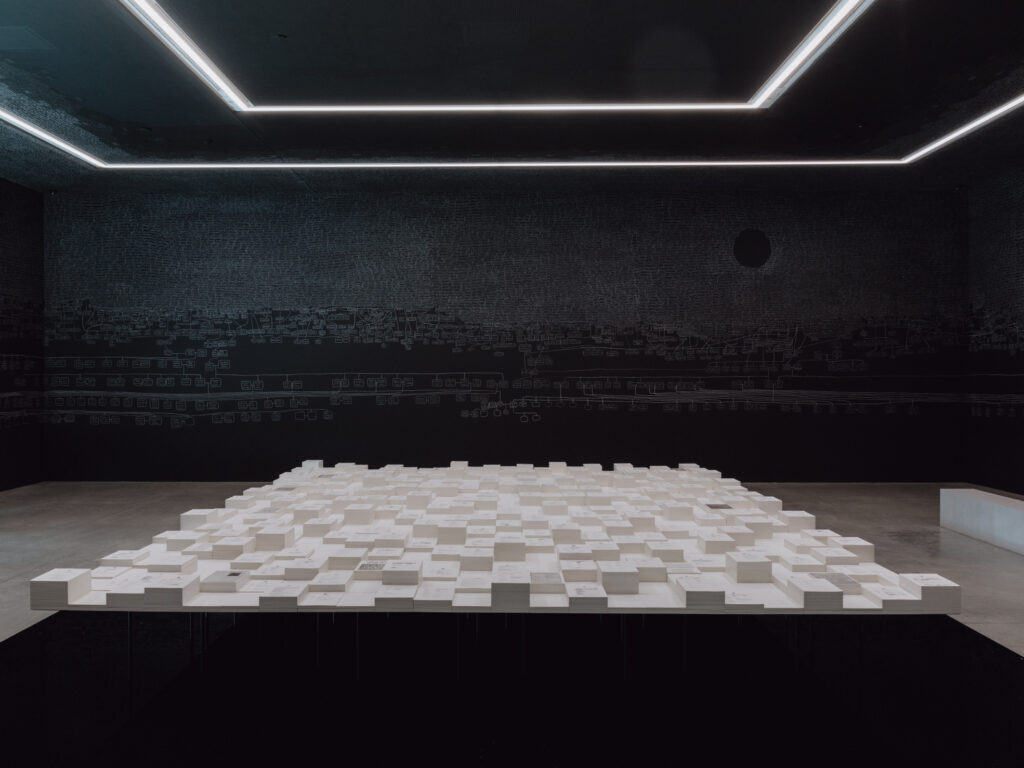
The hand-drawn genealogical chart also highlights the painful erosion of First Nations languages and dialects lost due to colonization. The presence of blank spaces between names, signs of actual erasure, becomes a powerful symbol of the atrocities endured by these communities. The terms “kith” and “kin,” originally linked to concepts of belonging and origin, now mean “friends and relatives,” echoing this loss of meaning and identity.

The pavilion includes a water-filled moat where official documents float, reflecting Moore’s commentary on the high incarceration rates of First Nations populations. In this silent yet eloquent exhibition, Archie Moore invites visitors to contemplate fragility and loss while offering hope for redemption and recognition.
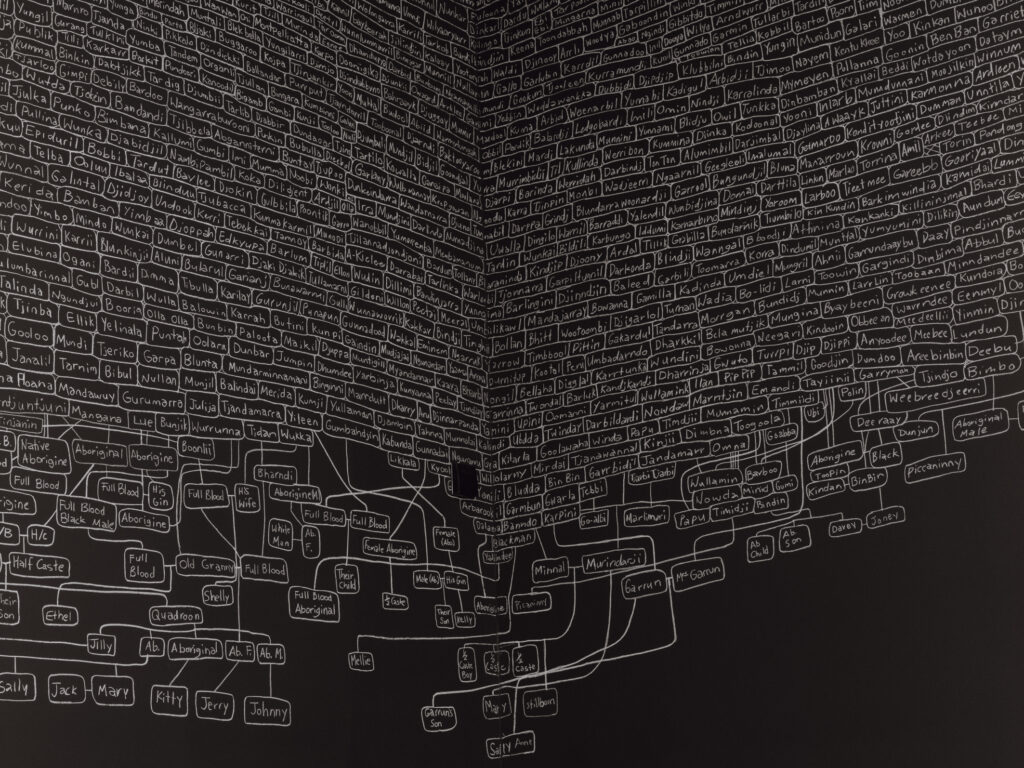
Luxembourg, A Comparative Dialogue Act
Above large speakers, metal tiles are placed, engraved with exhibit notes, which subtly vibrate under the effect of sound waves. The Luxembourg Pavilion thus transforms into an acoustic transmission plant. The four structures, referred to as “sound walls,” are central in the installation created by artist Andrea Mancini with the collective Every Island.
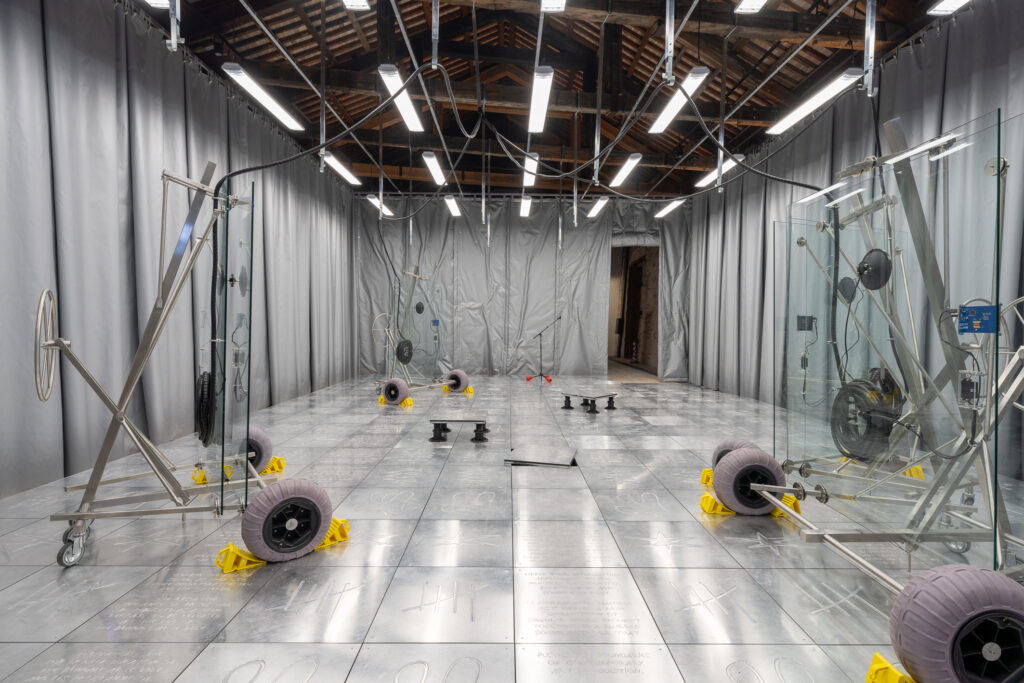
These unique walls will act as musical instruments during performances activated throughout the Biennale. During quiet times, however, they will become speakers for a collection of stored sounds and tracks composed by the artist during artistic residencies. The project includes a dynamic artist residency, featuring collaborations with four emerging talents of various nationalities: Spanish musician and performer Bella Báguena, French transdisciplinary artist Célin Jiang, Turkish artist Selin Davasse, and Swedish Stina Fors. This synergy will periodically transform the pavilion into an artistic creation lab, exploring new sound frontiers.
France, «Attila cataracte ta source/aux pieds des pitons verts/finira dans la grande mer/gouffre bleu/nous nous noyons/dans les larmes marées de la lune»
For the occasion, the French Pavilion evokes an aquatic environment where visitors can swim and immerse themselves, encountering the imagery of Julien Creuzet. Born in Paris and raised in Martinique, Creuzet connects African cultures with the currents of the Venetian lagoon, blending stories and symbologies.
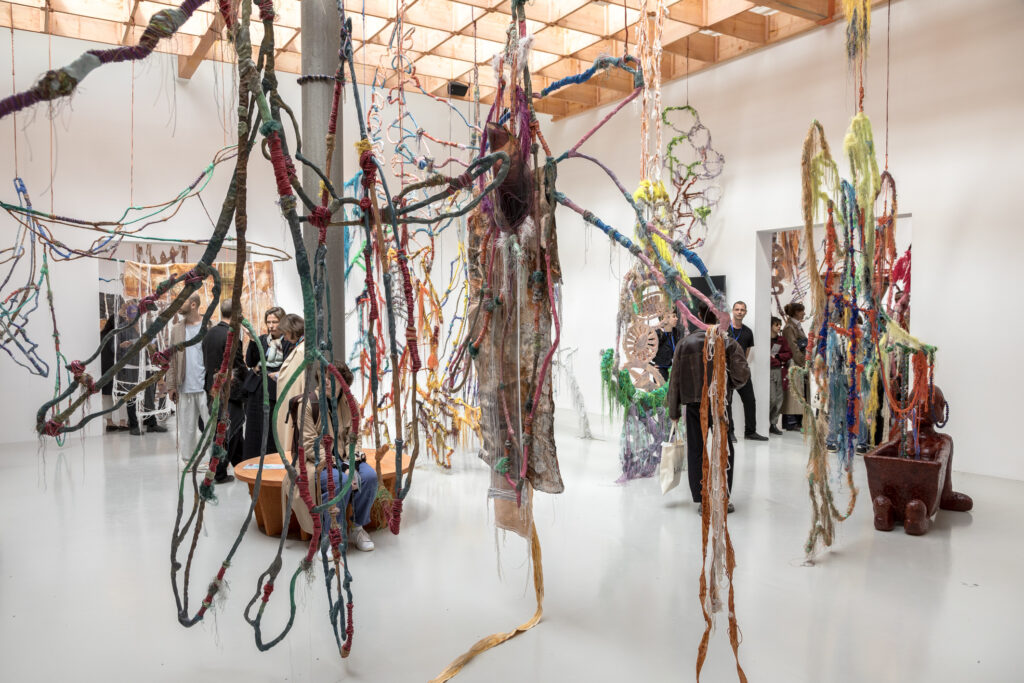
The installation consists of over eighty sculptures, including colourful nets hanging from the ceiling like seaweed and plant-like shapes that appear to float in the air, creating an atmosphere of deep connection with the sea. In the background, large screens animate mythical creatures that move, inviting visitors to approach their reality, reconciling the senses with a universe of extended and interconnected meanings.
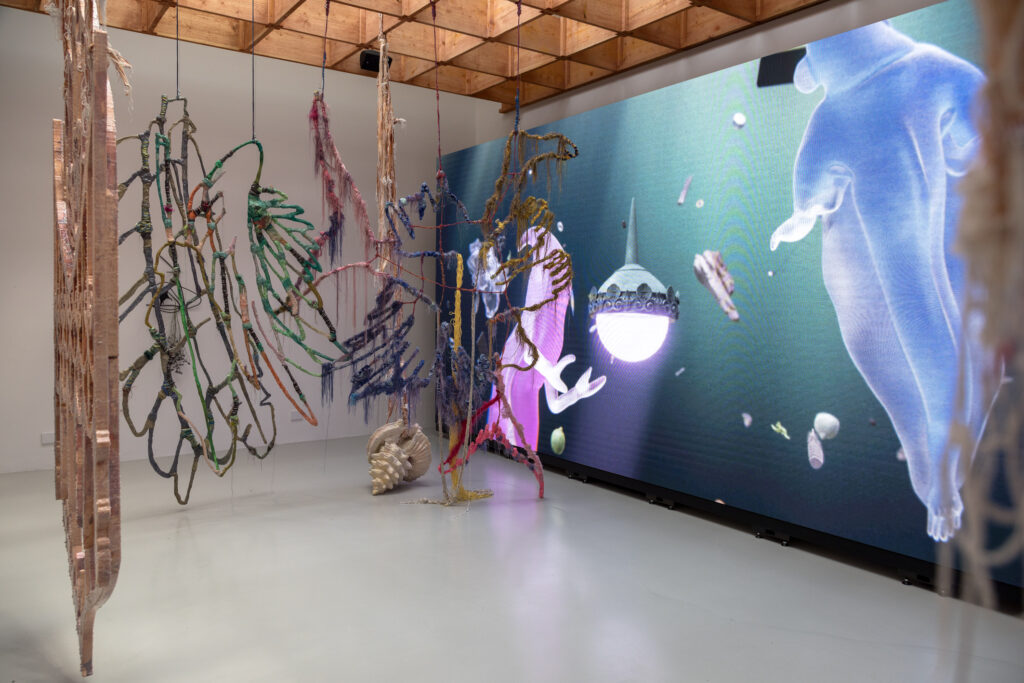
Netherlands, The International Celebration of Blasphemy and the Sacred
The Dutch Pavilion goes beyond mere inspiration, presenting a tangible and powerful example of decolonization. Inside the pavilion, the collective Catpc, consisting of Congolese artists who worked on plantations, shows how art can become a tool for emancipation and territorial reclamation. These artists have transformed their experiences and the lands worked into sustainable agroforestry systems, overturning the exploitation model imposed on them.
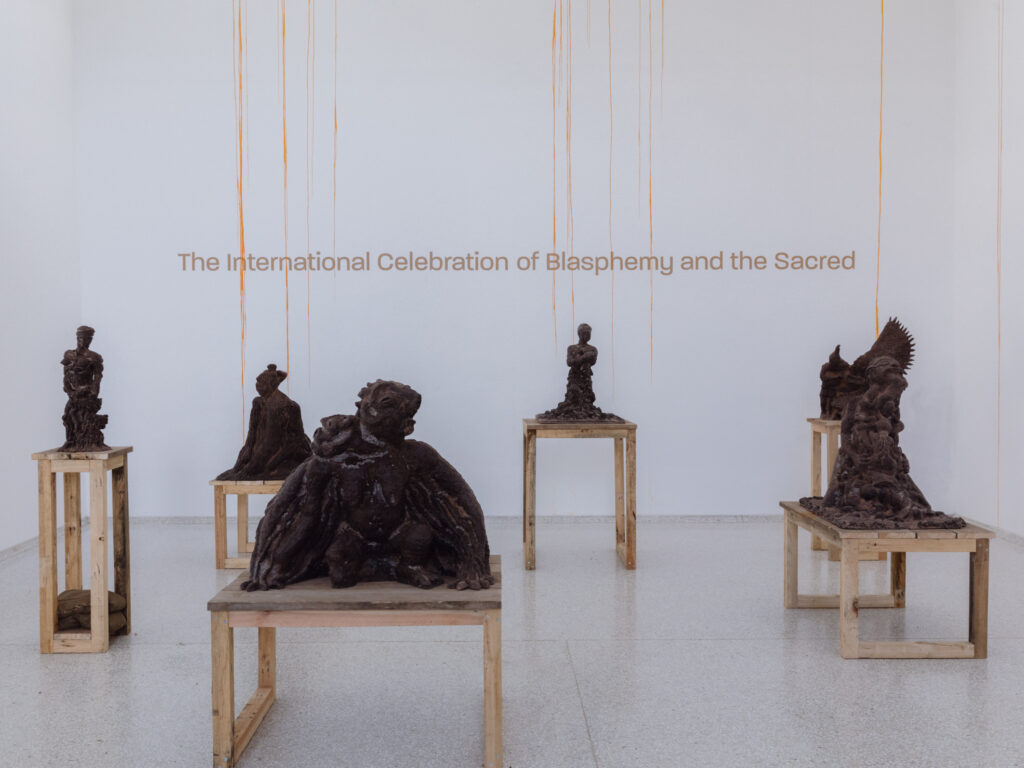
The sculptures on display are the result of a creative process that starts in the ancient forests near Lusanga, in the Democratic Republic of the Congo, where clay is extracted and then shaped. Later, these works are refined in Amsterdam, using palm oil and cocoa, significant raw materials that recall the same crops from which the artists originate.
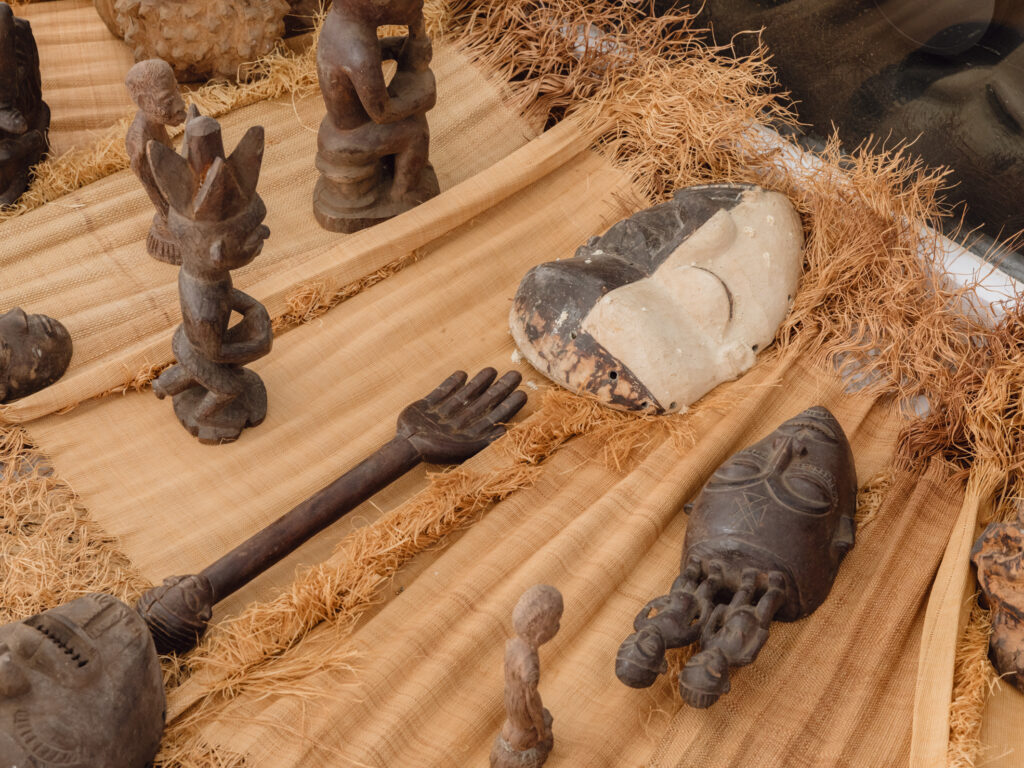
Catpc sends a critique of the art world and its economic foundations. The collective challenges artistic institutions to reflect on the origins of the funds they receive, highlighting the paradox of being supported by the same multinationals that perpetuate exploitation in developing countries. This provocation opens a crucial debate on the ethical responsibility of funding and supporting contemporary art.
Italy, DUE QUI / TO HEAR
The installation by Massimo Bartolini invites visitors to a reflective pause, where careful listening emerges as the only possible tool for personal and collective enrichment. The work proposes a moment of essential introspection necessary to understand the current context in which we live. The minimalist architecture of the building blends perfectly with the elaborate setup curated by Luca Cerizza, which organizes the space into three distinct parts.
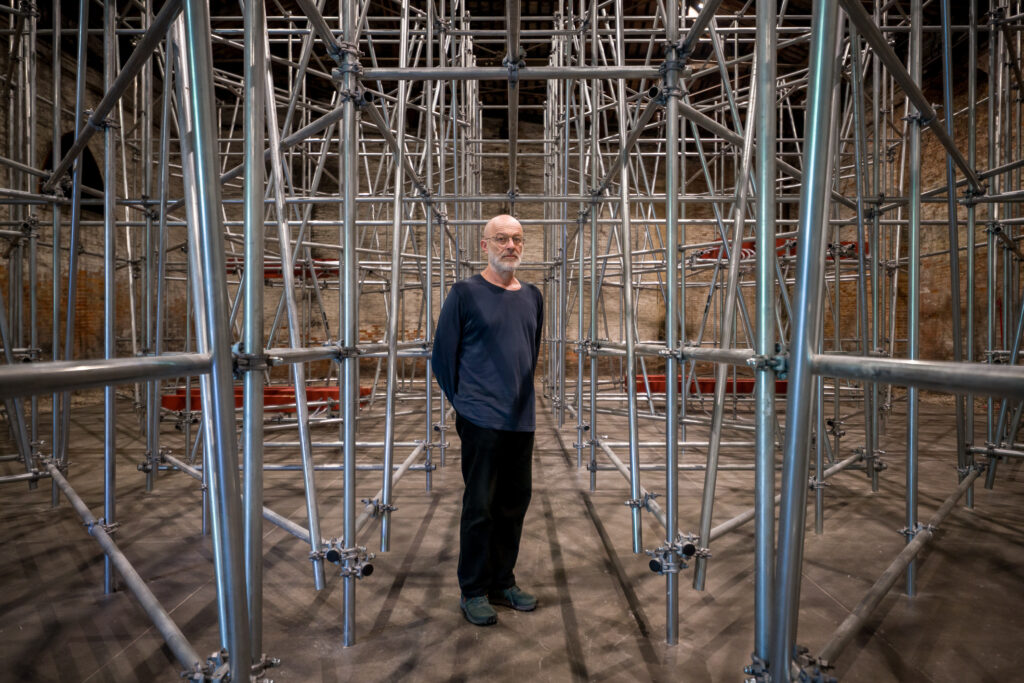
Inside, visitors meet the enigmatic presence of the Pensativo Bodhisattva, placed in an environment where time seems to stand still, accentuated by the sound of the pipe organ.
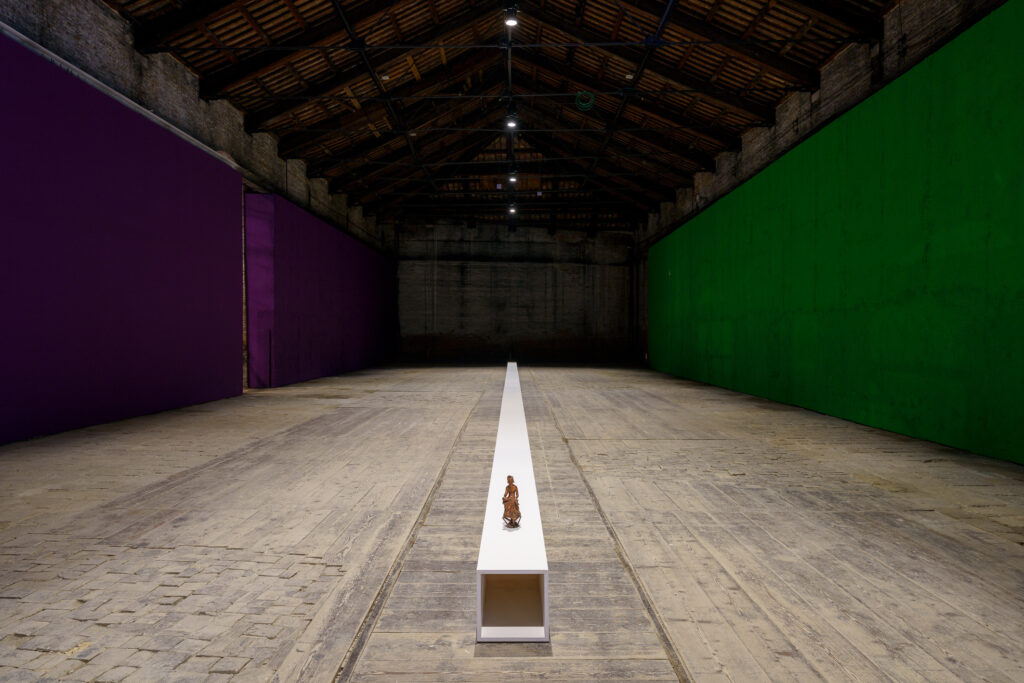
Visitors are then directed to the main space of Tesa 1 and to the notes of the composition by Caterina Barbieri and Kali Malone, surrounded by a vast structure of metallic tubes that run through the environment in all directions and at whose centre lies a pulsating, vivid circular sculpture, creating another moment of meditative suspension.
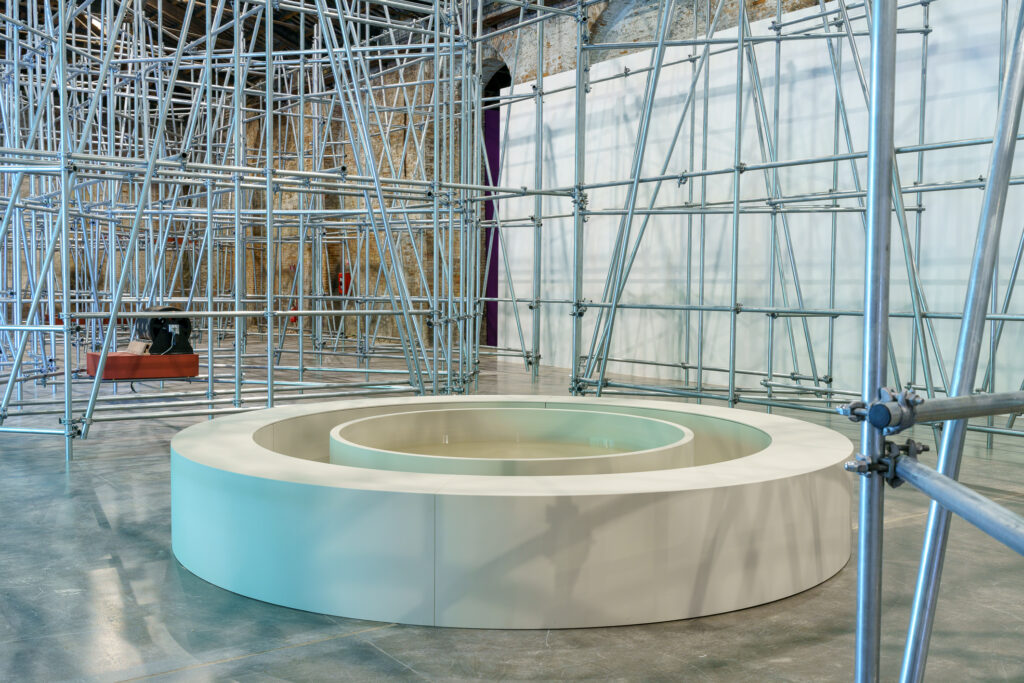
At the exit, the Garden of Virgins offers a further opportunity for listening to the work of Gavin Bryars, exploring new dynamics between human beings and the surrounding environment.
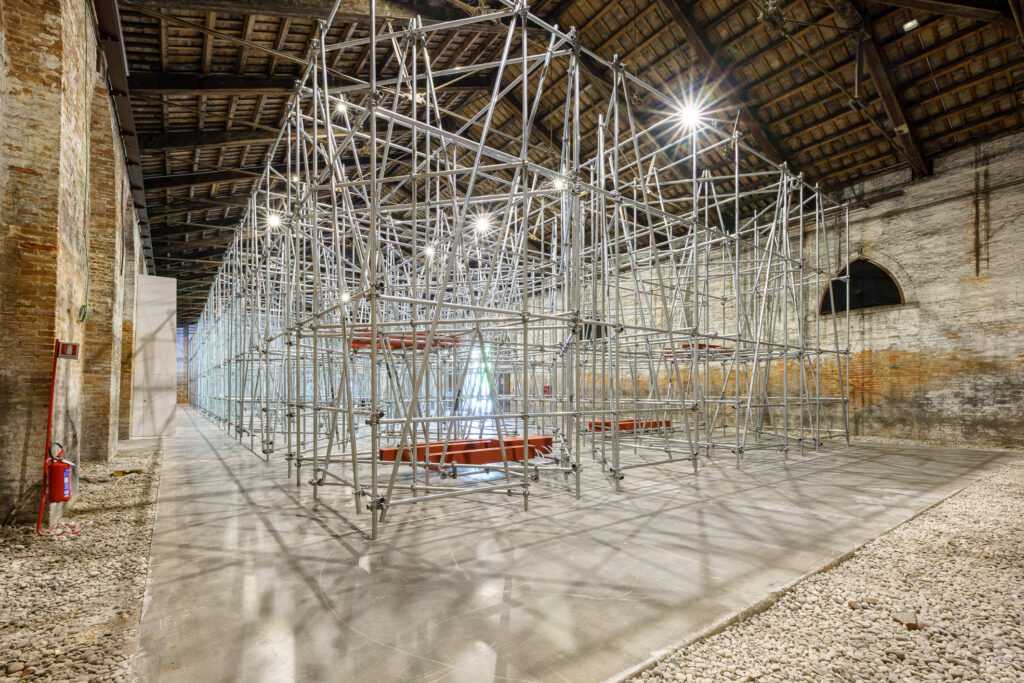
This sequence of spaces and sounds enriches the visitors’s experience and invites them to reconsider their interactions with space and time in a continuous reflection on being and becoming in the contemporary world.
